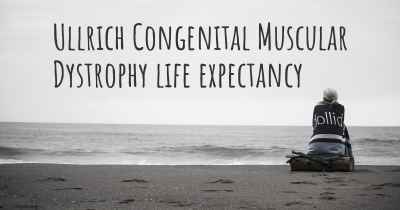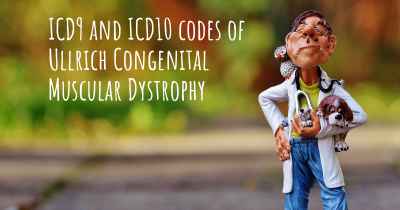How is Ullrich Congenital Muscular Dystrophy diagnosed?
See how Ullrich Congenital Muscular Dystrophy is diagnosed. Which specialists are essential to meet, what tests are needed and other useful information for the diagnosis of Ullrich Congenital Muscular Dystrophy

Ullrich Congenital Muscular Dystrophy (UCMD) is a rare genetic disorder that affects muscle function and development. It is characterized by muscle weakness, joint stiffness, and motor delays. Diagnosing UCMD can be challenging due to its rarity and overlapping symptoms with other muscular dystrophies. However, there are several key steps involved in the diagnostic process.
1. Clinical Evaluation: The initial step in diagnosing UCMD involves a thorough clinical evaluation by a healthcare professional. They will review the patient's medical history, assess their symptoms, and perform a physical examination. The doctor will look for specific signs such as muscle weakness, joint contractures, and hypermobility.
2. Family History: Gathering information about the patient's family history is crucial as UCMD is an inherited disorder. The doctor will inquire about any known cases of muscular dystrophy or other neuromuscular conditions in the family. This information helps in determining the likelihood of a genetic cause.
3. Muscle Biopsy: A muscle biopsy is often performed to confirm the diagnosis of UCMD. During this procedure, a small piece of muscle tissue is surgically removed and examined under a microscope. In UCMD, the muscle biopsy typically reveals specific abnormalities, such as the presence of collagen VI deficiency or structural changes in the muscle fibers.
4. Genetic Testing: Genetic testing plays a crucial role in diagnosing UCMD. It involves analyzing the patient's DNA to identify specific mutations or changes in the genes associated with UCMD. The most common genes involved in UCMD are COL6A1, COL6A2, and COL6A3, which code for collagen VI proteins. Genetic testing can be done through various methods, including targeted gene sequencing, whole-exome sequencing, or gene panel testing.
5. Electromyography (EMG) and Nerve Conduction Studies: EMG and nerve conduction studies may be performed to assess the electrical activity and function of the muscles and nerves. These tests can help differentiate UCMD from other neuromuscular disorders and provide additional evidence for the diagnosis.
6. Imaging Studies: Imaging techniques such as magnetic resonance imaging (MRI) or ultrasound may be used to evaluate muscle structure and detect any abnormalities. These imaging studies can provide valuable information about muscle involvement and aid in the diagnosis of UCMD.
7. Consultation with Specialists: Due to the complexity of UCMD, it is often necessary to consult with various specialists, including neurologists, geneticists, and orthopedic surgeons. Their expertise and input can help confirm the diagnosis and guide appropriate management and treatment strategies.
It is important to note that the diagnostic process may vary depending on the individual case and the availability of resources. Additionally, early diagnosis of UCMD is crucial for implementing appropriate interventions and support for affected individuals and their families.








